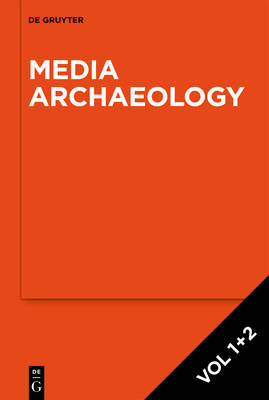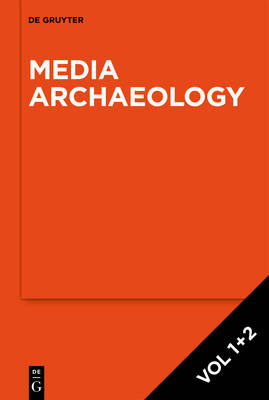
- Retrait gratuit dans votre magasin Club
- 7.000.000 titres dans notre catalogue
- Payer en toute sécurité
- Toujours un magasin près de chez vous
- Retrait gratuit dans votre magasin Club
- 7.000.000 titres dans notre catalogue
- Payer en toute sécurité
- Toujours un magasin près de chez vous
[Set Media Archaeology]
Andreas Fickers, Annie Van Den Oever, Tim Van Der Heijden, Aleksander KolkowskiDescription
Over the last few years, 'media archaeology' has evolved from a marginal topic to an academic approach en vogue. In large part, media archaeology has been a history of discourse-oriented analysis. While this tradition has produced interesting studies focusing on the discursive construction and symbolic meaning of different media technologies, the materiality of media technologies and the practices have lacked academic attention. These volumes aim at taking the materiality of past media devices seriously and explore the heuristic possibilities of an experimental study of these devices. In short, to systematically develop a hands-on approach to experimental media archaeology.
So far, experimental media archaeology was lacking practical experiments and systematic reflections on the methodological underpinnings of this new approach. In a unique format, the twoe volumes of "Doing Experimental Media Archaeology (DEMA): Theory & Practice" offer both a sophisticated reflection on the epistemological and heuristic potential of hands-on media historical research and describe a series of basic, media-technological and performative media archaeological experiments with great detail, as such exploring the potential of hands-on media experiments for media education in universities and museums.
The hands-on and experimental approach of DEMA offers the unique opportunity to 'grasp' media and communication technologies in their concrete materiality and tangibility and to (re)-sensitize historians and communication scholars for the material qualities and performative dimension of past media devices and practices.
Spécifications
Parties prenantes
- Auteur(s) :
- Editeur:
Contenu
- Nombre de pages :
- 388
- Langue:
- Anglais
Caractéristiques
- EAN:
- 9783110795820
- Date de parution :
- 31-12-22
- Format:
- Livre relié
- Format numérique:
- Genaaid
- Dimensions :
- 155 mm x 230 mm
- Poids :
- 807 g







